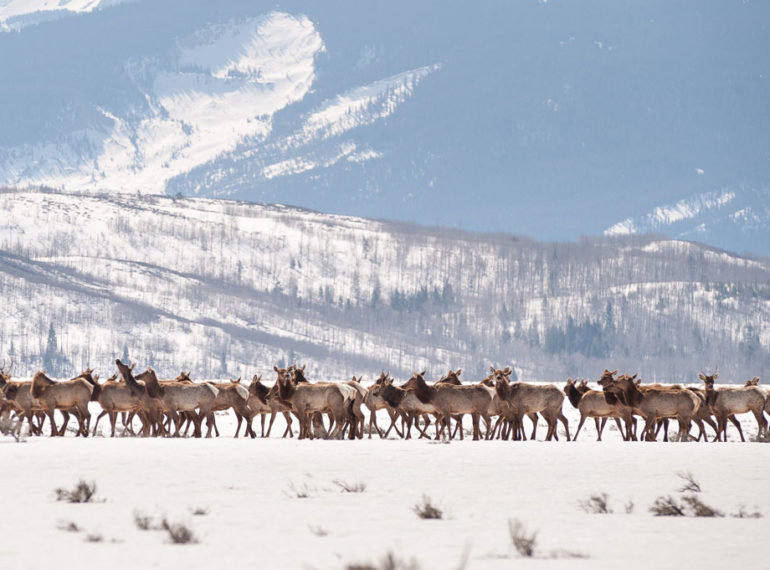A coalition of four conservation groups have filed formal objections to the Bridger-Teton National Forest’s decision to renew a permit allowing the Wyoming Game and Fish Department to continue feeding elk at Alkali Creek near the Gros Ventre Wilderness.
The coalition is especially concerned about the acceleration of diseases when elk are crowded during winter feeding. In particular, the group is worried about the approach of the always-fatal Chronic Wasting Disease into areas where 21 state feedgrounds and the National Elk Refuge are located.
“These elk feedlots are Frankensteins created by the Wyoming Game and Fish Department to placate the livestock industry,” said Jonathan Ratner, Wyoming Director of Western Watersheds Project. “They were a bad idea when they were created, but they’ve taken on a life of their own and are an even worse idea now in light of CWD.”
Western Watersheds Project is among the groups filing objections to the permit renewal. Assisted and supported by Wyoming Wildlife Advocates, they also include the Sierra Club, Wilderness Watch and Gallatin Wildlife Association.
CWD is sweeping west across the state, and was found in seven new hunt areas in 2014. A recent analysis by Wyoming Wildlife Advocates indicated that CWD has advanced an average of 1.8 million acres per year since 2000.
In January, Acting Supervisor Kathryn Conant admitted that WGFD’s feeding increases risk of disease transmission, yet the forest service decided to continue the feeding.
The coalition contends that Conant’s decision violated many of the forest service’s duties to protect wildlife and wilderness. For example, the Forest Service refused to even consider phasing out feeding on forest service lands, as required by law, despite overwhelming public support and science indicating that this is the best way to minimize the spread of CWD.
Additionally, feeding at Alkali Creek denudes vegetation and maintains unnatural conditions in the Gros Ventre Wilderness, contrary to the Wilderness Act.
Wyoming Wildlife Advocates and the coalition filing the objections urge forest service and WGFD to better conserve large carnivores, which can play an important role in dispersing herds and keeping diseases in check.
“Feedgrounds are counterproductive. Conserving large carnivores and allowing elk and deer herds to disperse freely are the best measures to keep herds healthy,” said Lloyd Dorsey of WWA.
According to Sierra Club Wyoming Chapter’s Connie Wilbert, “It’s way past time to start phasing out these wildlife feedlots, with everything we know about wildlife disease transmission and the devastating impact CWD already is having on ungulates in Wyoming. Ending feeding at Alkali Creek right now, when we have the chance to, would be a good first step.”
Glen Hockett of the Gallatin Wildlife Association noted that feedgrounds spreading disease in Wyoming threaten wildlife in the Greater Yellowstone Ecosystem.
“There is an unbroken chain of elk from these ill-advised feedgrounds in Wyoming to our cherished wildlife winter ranges in Montana,” Hockett said. These feedgrounds threaten wildlife throughout the entire GYE.”
WildEarth Guardians and WWA filed for “interested party status” in support of objections filed by the coalition.
An objections hearing between the groups and the forest service is scheduled for April 10. On some unspecified date following that meeting, the forest service will make its final decision on the permit renewal.

